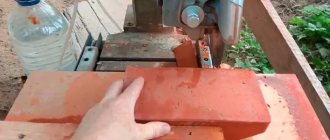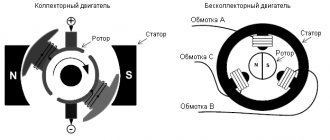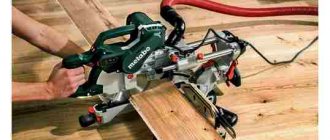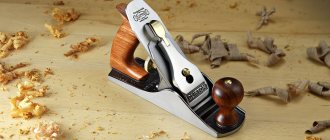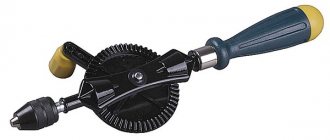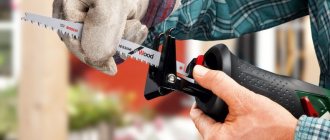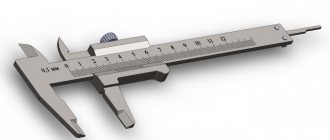What does he do?
After completing the training and receiving the appropriate rank, the now qualified specialist begins to carry out the work assigned to him.
This may include the following tasks:
- Metalworking of parts prepared for this process;
- Conducts high-quality processing and repair of devices that are specified in the permit;
- Involved in the process of hardening the finished tool;
- Manufactures tools in accordance with technical specifications;
- Engaged in servicing the machine on which he works;
- Conducts tool testing within its own competence.
Techniques for making tools for working with metal
First of all, the tool must meet high requirements that allow you to work with strong and durable material. Tools for metal processing are made using the following methods:
- burning;
- hardening;
- forging using a press;
- grinding;
- hot stamping of hardened steel;
- induction hardening;
- metallization.
Such methods are necessary to give the working surface of the tool additional strength. The resulting equipment must have excellent cutting properties, as well as increased strength.
Main types of instruments
All equipment for metal processing is divided into several main groups, according to the method of influence:
- Pipe cutters. This is a group of equipment that is designed for cutting pipes of various thicknesses and diameters.
- Cross mixer - necessary for creating grooves in metal workpieces.
- Drill stand. There is a drill in it and it is possible to fix the workpiece.
- A die is used to cut external threads. A die holder is made for them.
- Goniometer. This is a measuring device, an analogue of the well-known protractor.
- A soldering iron is used to join metal parts.
- Hand hacksaw for metal. Designed for cutting metal, both sheet metal and small pipes.
- Metal scissors. Designed for cutting sheets that are not too strong.
- Vise - necessary for fixing the workpiece.
- Milling cutters. They work with different surfaces and can be cylindrical, end, disk, end, or conical.
All tools are used in industry and in everyday life. Many of them are used in combination.
Types of popular measuring instruments
- metal tape measure;
- laser tape measure;
- micrometer;
- level;
- calipers.
Professional metal tape measure
In construction stores you can find any construction tool you are interested in. Also, many companies offer rental services for such devices, which reduces construction and repair costs. In addition, this procedure eliminates the purchase of low-quality construction tools. You can also use several models and choose the best one to purchase for personal use.
General rules for choosing hand tools
There are still several general rules for choosing the right type of tools. This may include:
- guidance on purchasing goods for household or professional use;
- manufacturer (length of stay on the market, specialization, availability of a quality certificate, awards, positive customer reviews);
- material (not only the main part of the product is studied, but also additional elements: hinges, handles, connecting parts, adapters, etc.);
- warranty service, service life and duration of warranty;
- additional functionality and accessories.
Having navigated through the tools you have chosen and answered all the points above, do not forget about one more important component. No matter how high the quality of the purchase, you will still have to carefully monitor the inventory, observing the storage rules. Otherwise, the tool will quickly wear out, become thinner, and will no longer be suitable for convenient use.
There are only a few simple rules that are recommended for potential owners of absolutely any hand tool to comply with:
- purchase a special case for storing screwdrivers, keys, chisels, knives, etc. (it can be made of metal, plastic, or several different materials);
- do not leave equipment uncleaned after work;
- observe the temperature conditions of the room where tool cases are left;
- monitor the humidity (high levels can lead to the formation of corrosion stains).
Don't forget about tool storage
If you can figure out the choice of immediate tools quite simply, since the principle of selection is almost always based on general principles, then finding a truly suitable case for storing all the previously purchased goods is a more difficult task.
Initially, consultants recommend deciding on the tasks for the future tool repository:
- storage volume (this includes specialized mobile or stationary cabinets);
- transportation and mobility (most often these are cases, suitcases with handles, a lot of compartments, significant capacity and impact resistance);
- organization of space (organizers, so-called installer belts, simplifying work in hard-to-reach places, because in this case “everything is with you”).
Having decided what is a higher priority for you, you can begin a detailed study of such practical assistants as:
- box-bag (they are also open-type boxes). A primitive solution from the past. They are usually made from wood. There is no division into sections inside. The disadvantages are obvious: touch such a bag and everything will scatter on the floor;
- closed box , which can secure the lid with latches, straps, buttons, locks;
- mounting belt . Attached to the belt. It holds few things, but everything needed to complete a specific task is always at hand;
- organizer (similar to step 2, but often contains not only the wrenches, chisels, hacksaws themselves, but also secondary equipment and corresponding consumables and fasteners).
Special attention should be paid to the materials used to make “storage” for equipment and tools. Many people prefer metal cases, which is fair, but this option has a significant drawback - weight. But such suitcases will last a long time.
Plastic is much lighter, it is easy to wash, it is not easily influenced by the environment (it will certainly not be touched by rust). But its lower strength may put an end to its service.
Do not assume that the relatively low cost of a tool always means terrible quality. It is much more productive to base your choice on the more important points described in the article above, and then the purchase can bring not only practical benefits, but also pleasure.
These articles may also be of interest to you:
- Making a rack for storing garden tools
- Brush cutters - modern garden tools
- Electric reciprocating saws. Features and purpose
- Cordless saw or gasoline saw, which is more profitable?
Techniques for making tools for working with metal
First of all, the tool must meet high requirements that allow you to work with strong and durable material. Tools for metal processing are made using the following methods:
- burning;
- hardening;
- forging using a press;
- grinding;
- hot stamping of hardened steel;
- induction hardening;
- metallization.
Such methods are necessary to give the working surface of the tool additional strength. The resulting equipment must have excellent cutting properties, as well as increased strength.
Main types of instruments
All equipment for metal processing is divided into several main groups, according to the method of influence:
- Pipe cutters. This is a group of equipment that is designed for cutting pipes of various thicknesses and diameters.
- Cross mixer - necessary for creating grooves in metal workpieces.
- Drill stand. There is a drill in it and it is possible to fix the workpiece.
- A die is used to cut external threads. A die holder is made for them.
- Goniometer. This is a measuring device, an analogue of the well-known protractor.
- A soldering iron is used to join metal parts.
- Hand hacksaw for metal. Designed for cutting metal, both sheet metal and small pipes.
- Metal scissors. Designed for cutting sheets that are not too strong.
- Vise - necessary for fixing the workpiece.
- Milling cutters. They work with different surfaces and can be cylindrical, end, disk, end, or conical.
All tools are used in industry and in everyday life. Many of them are used in combination.
Screwdriver with a set of rare bits
Super set, it really includes everything you could want. The set contains 110 rare bits, all of them made of steel. Also included is a magnetic screwdriver with a rubber handle, a magnetizer/demagnetizer, and tweezers. Everything is packed in a small case.
This makes using this screwdriver easy. Selecting bits is also easy; they are laid out conveniently, from larger to smaller. With this kit you can open absolutely everything. It’s definitely difficult in a house without such a set.
And plus, now you can throw away all the unnecessary screwdrivers and keep this one. A great approach to a simple tool that will be useful to everyone. I definitely recommend taking a closer look at this set.
